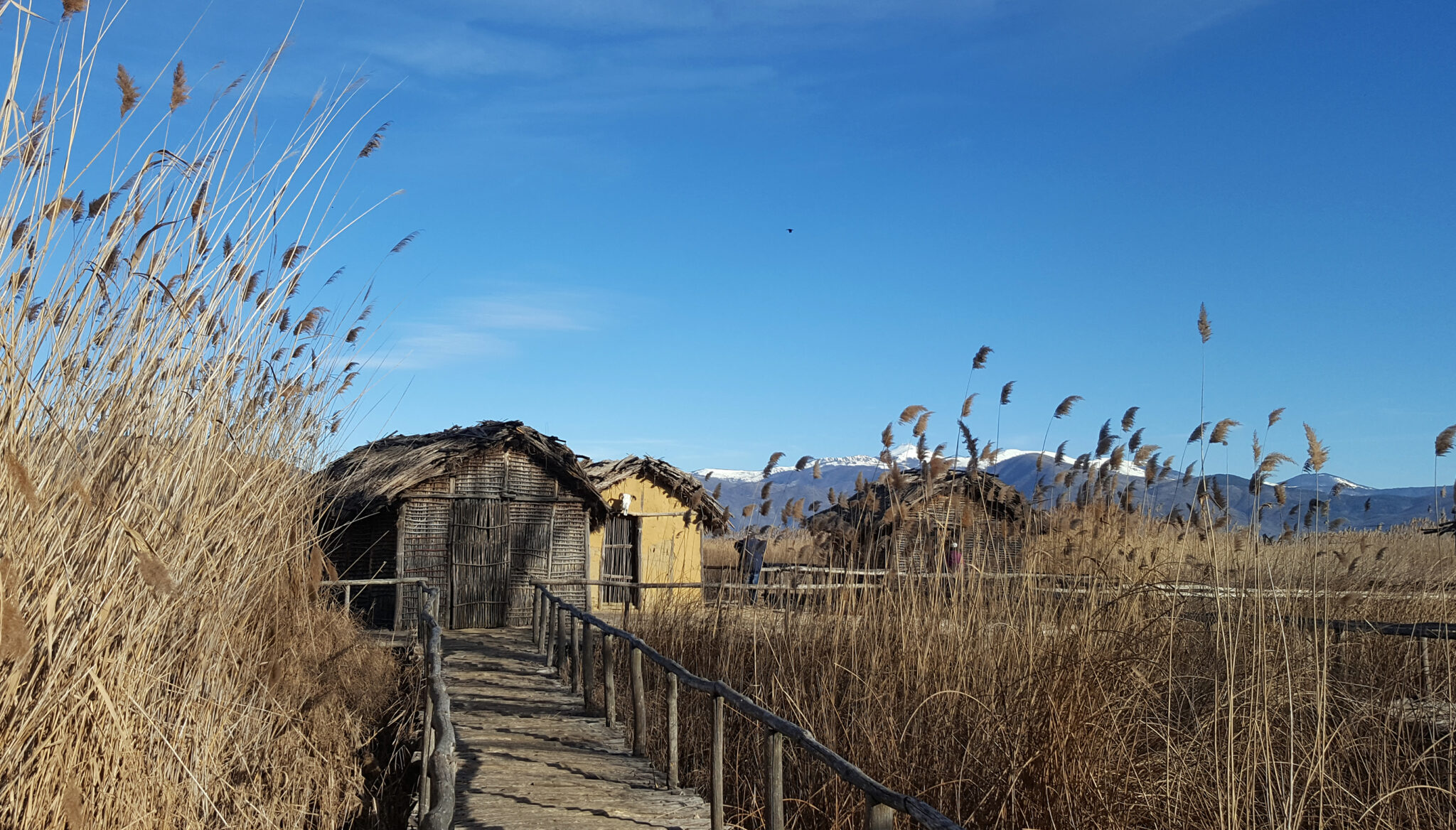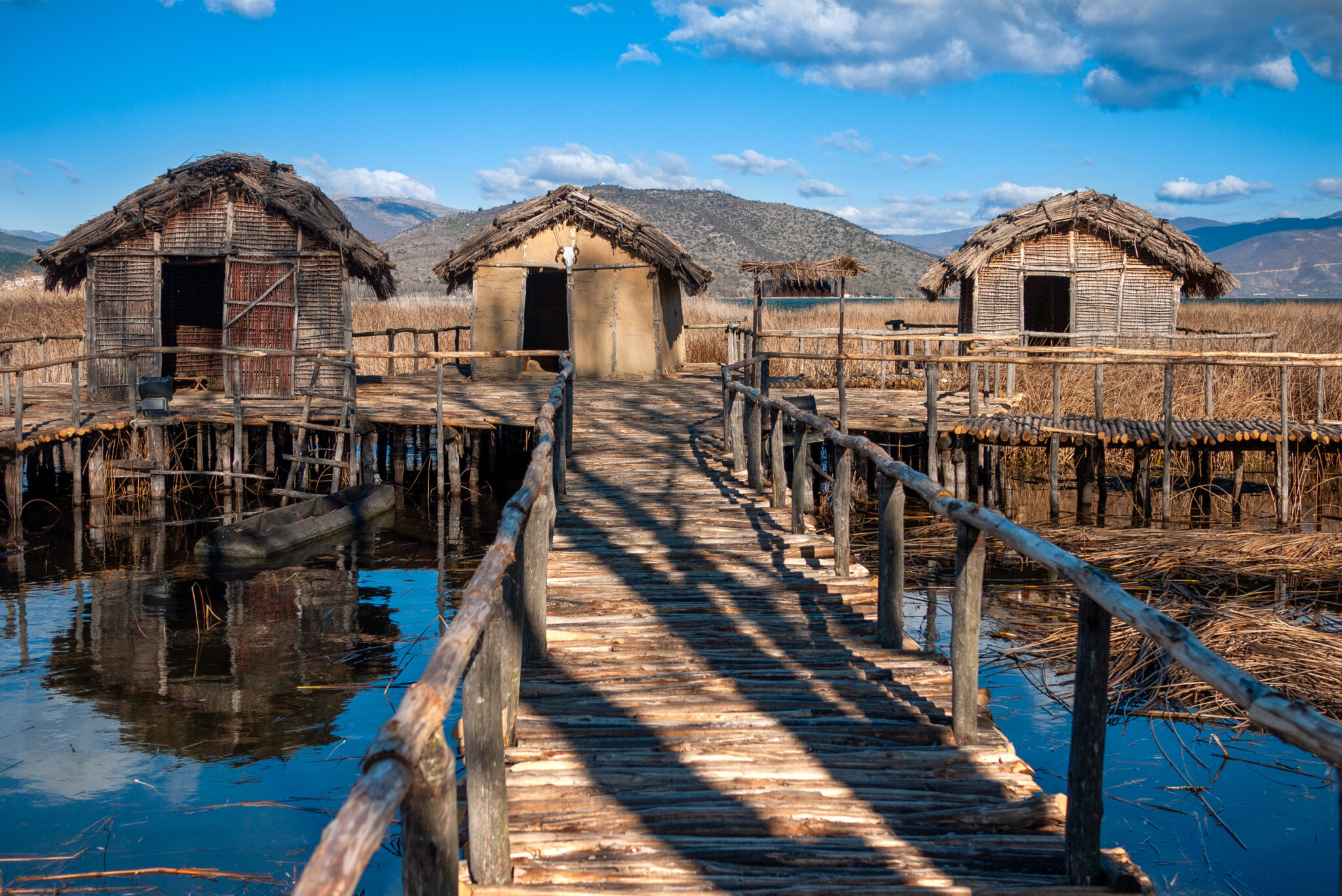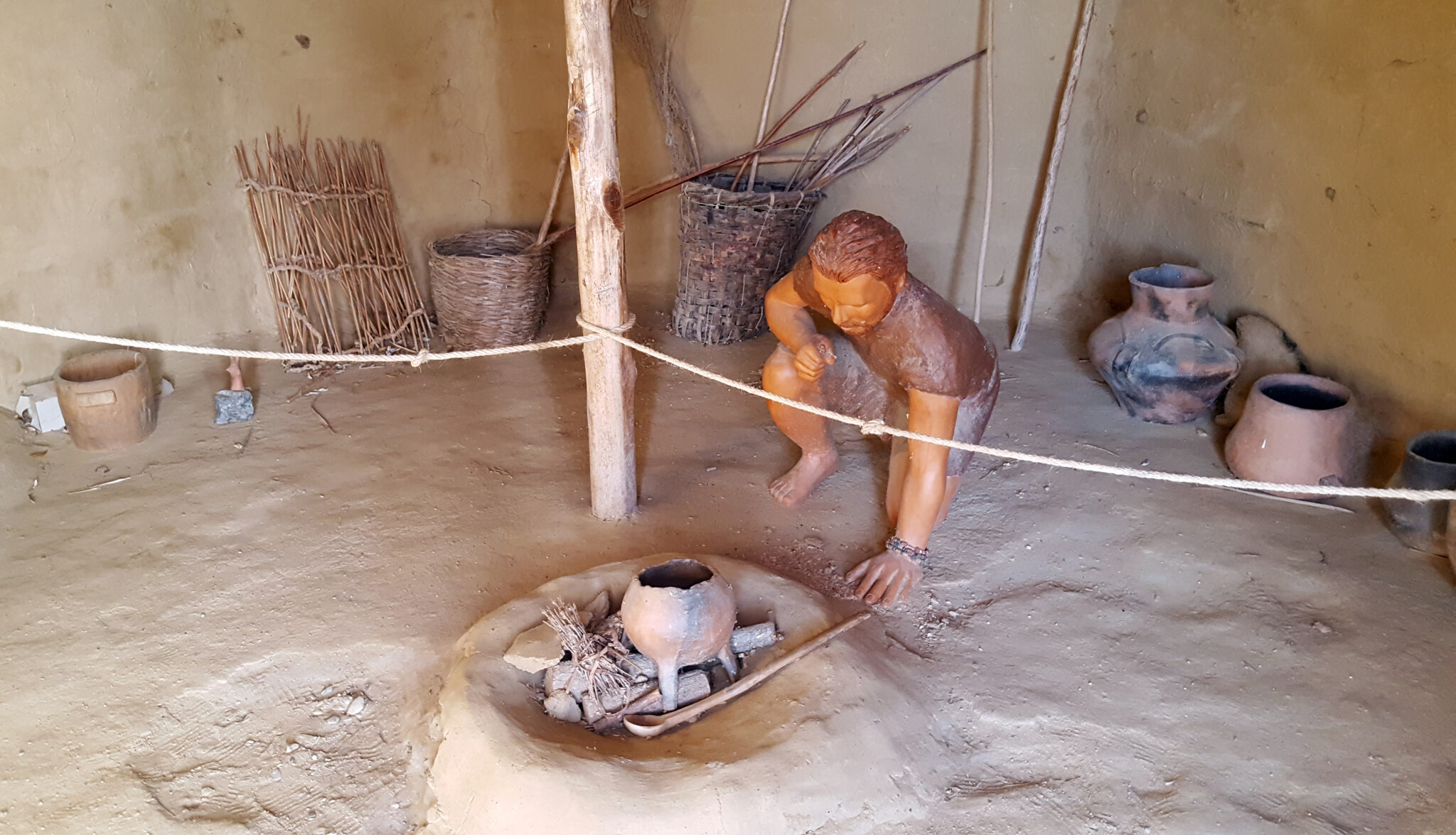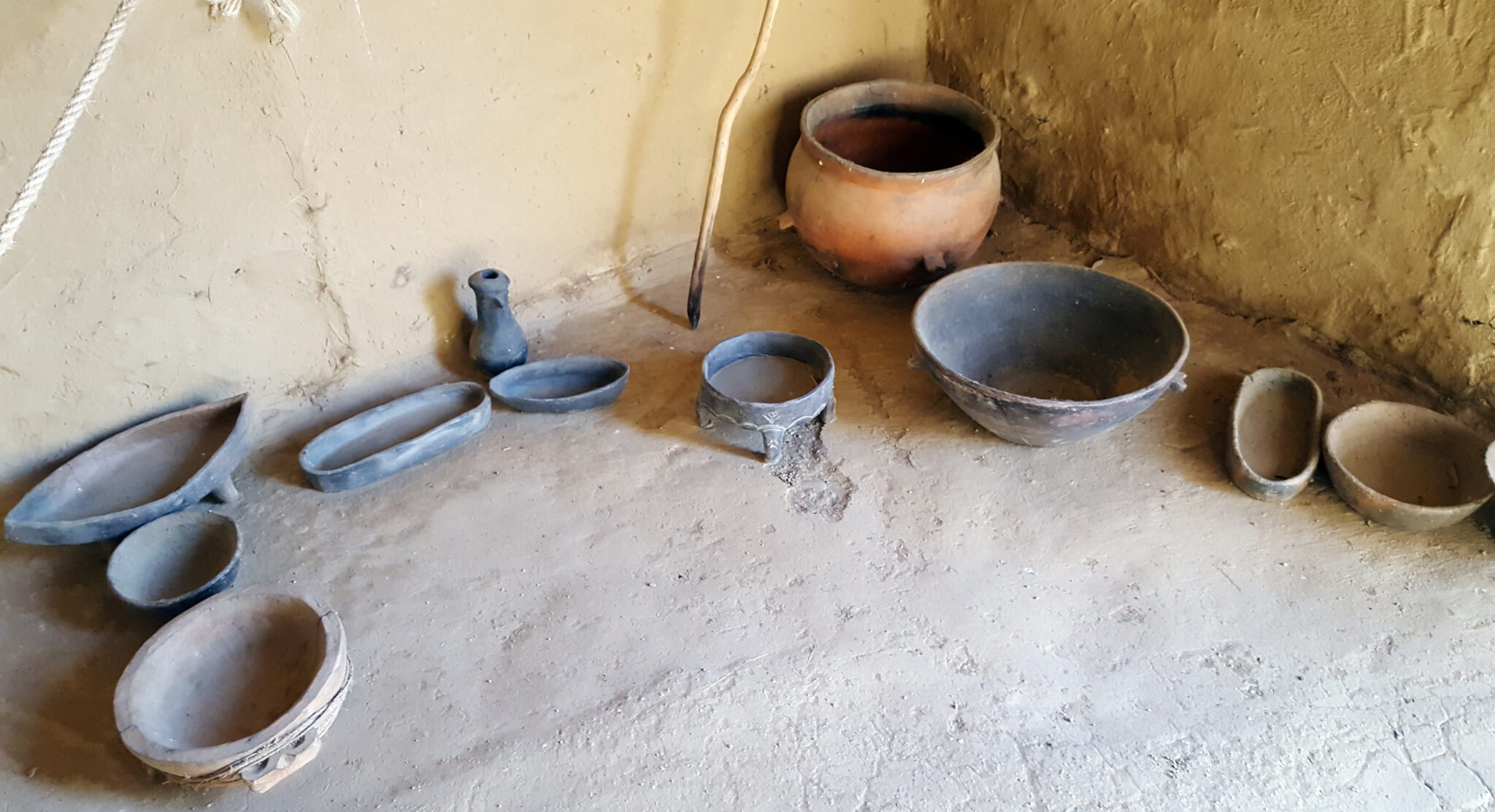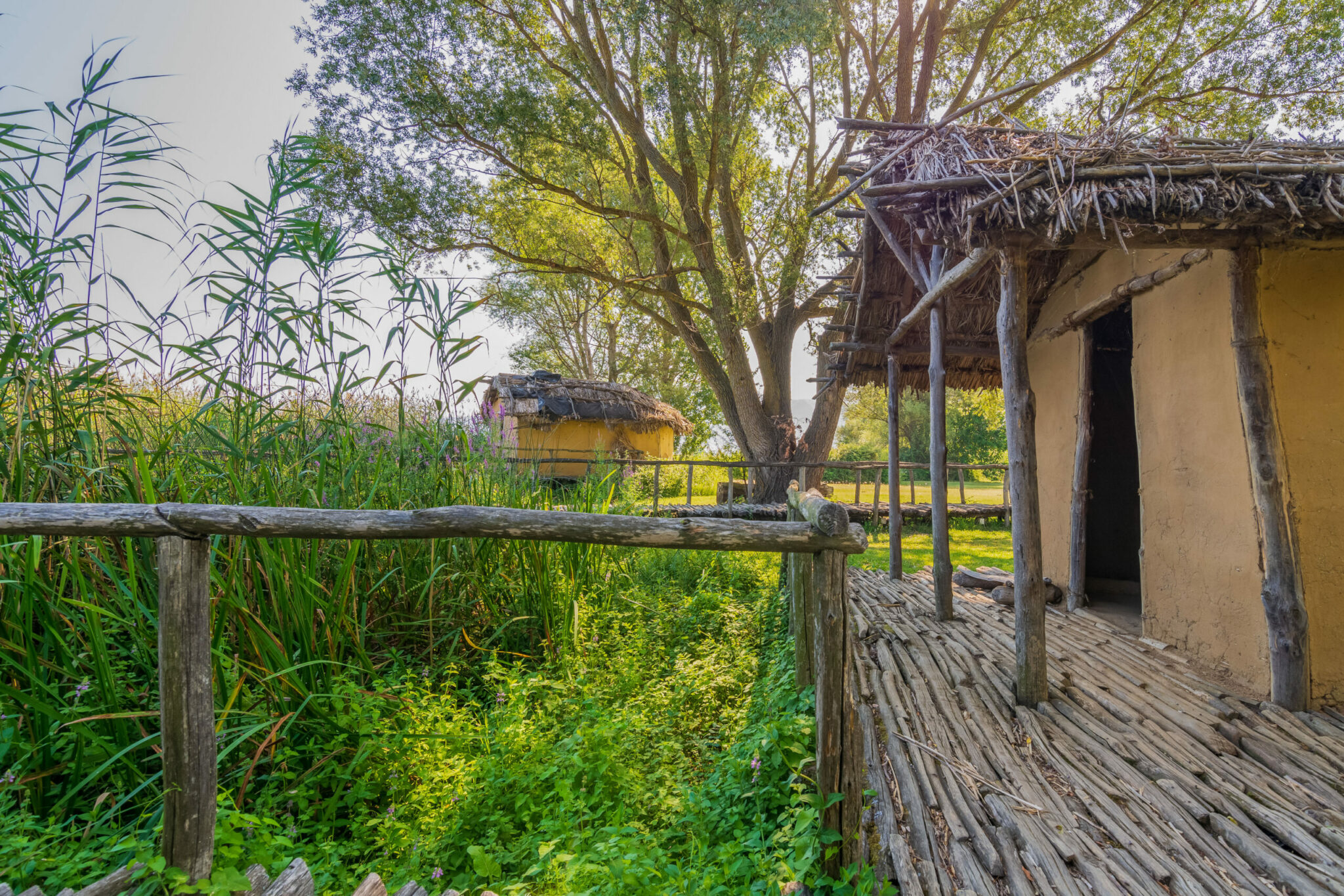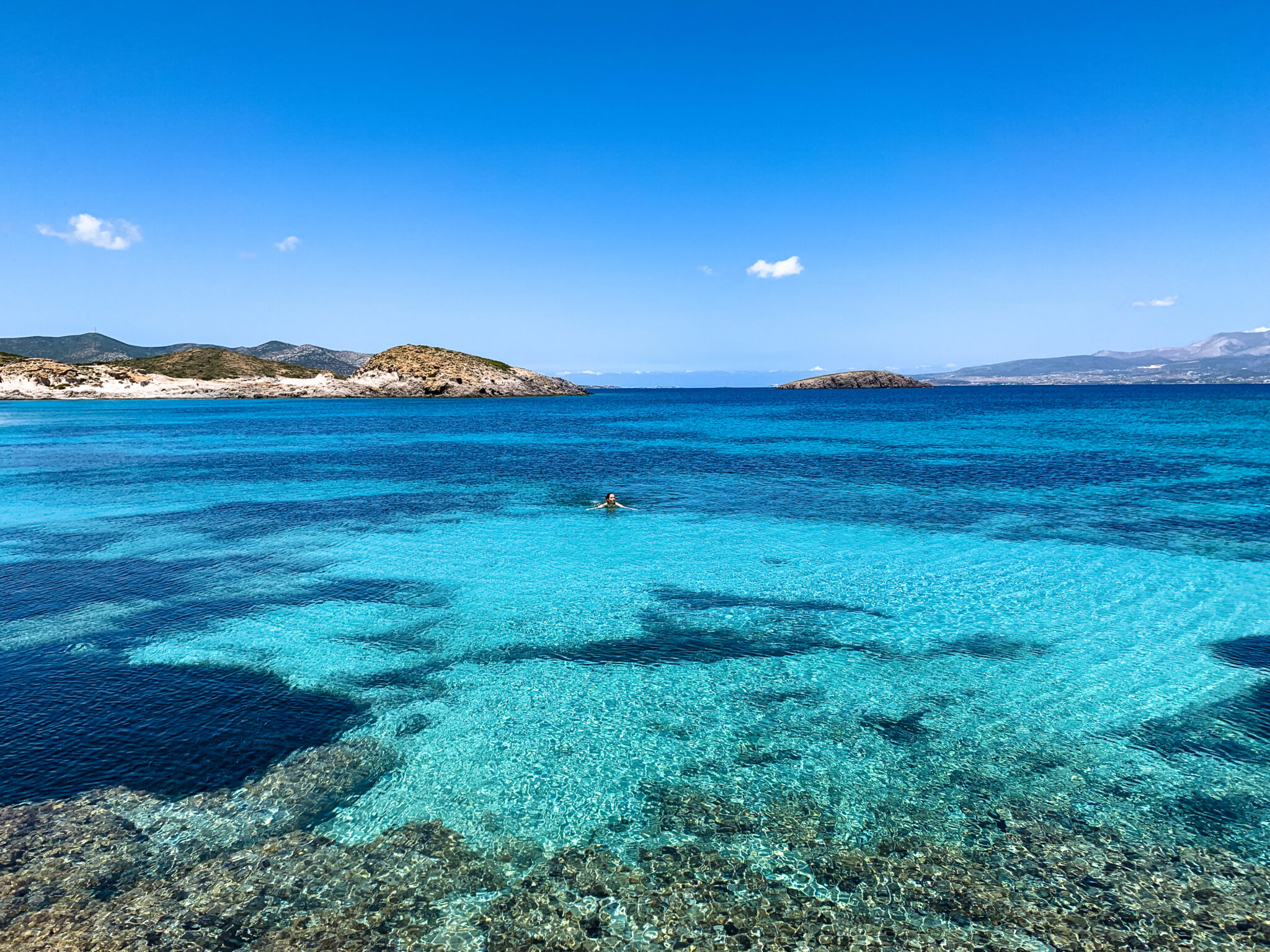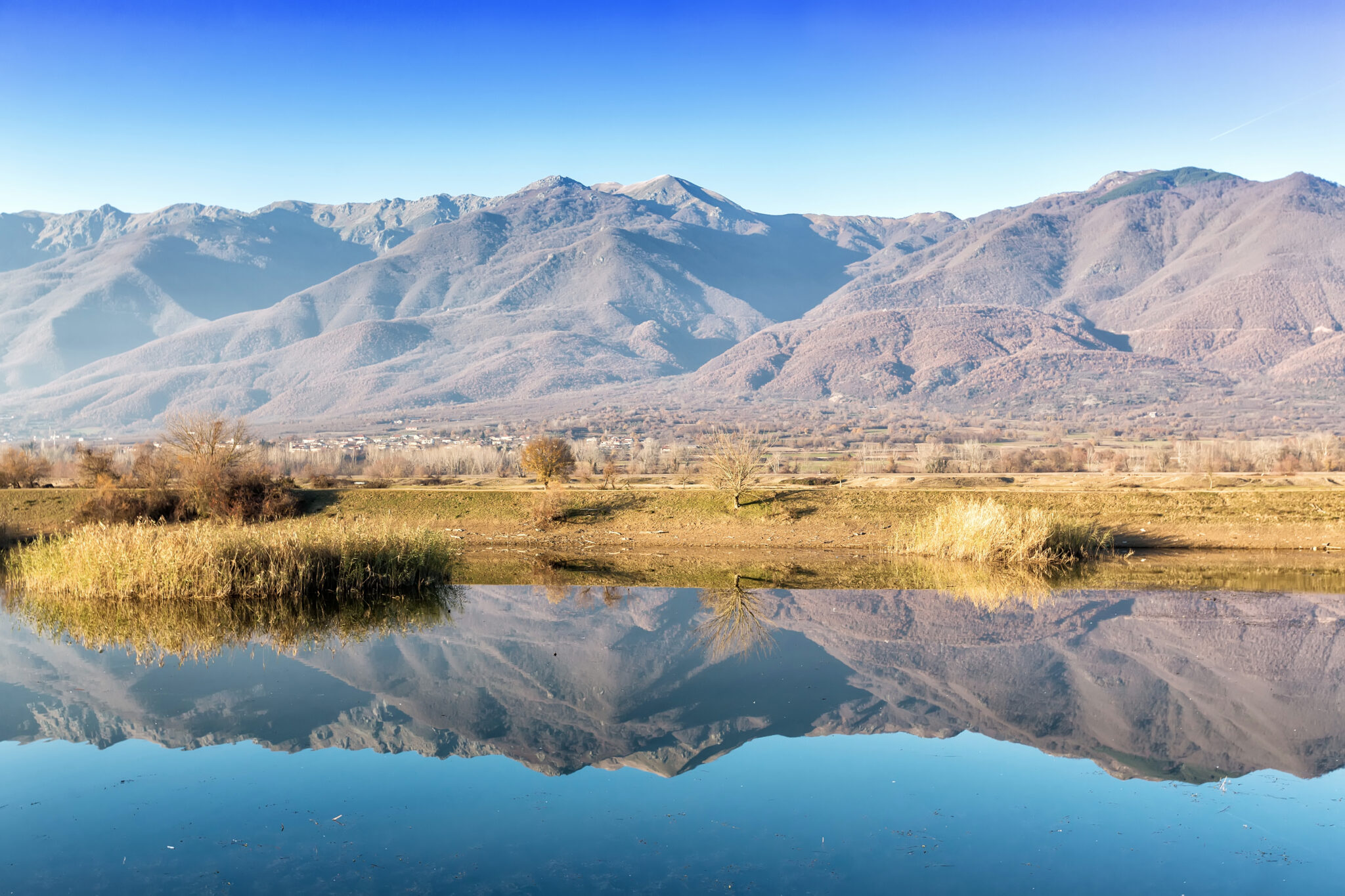The oldest Neolithic settlement in Europe is in Kastoria, and in particular just eight kilometres from town, in Dispilio.
In the area Nisi a prehistoric lake settlement about 7.000 years old, dated back to 5.000 BC, was found. It’s estimated that around 3.000 people lived in an organised community there. They made tools and objects from materials they found in nature, they knew how to write, and how to play music, they had pets, the fished and they stored their food.
Today visitors can view an archaeological park on the location with a faithful reproduction of the settlement. The park is by the lake and includes. A visit to this place will take you thousands of years back in time and will give you a glimpse of the prehistoric human.
The settlement was discovered by accident in 1932 when the level of the Lake Orestiada lowered and revealed traces of wooden poles. The excavations in the area lasted for many years and are among the most important of its kind to ever take place in Greece, as it is the first lake settlement to ever be discovered in Greece.
The reproduction of the settlement in original dimensions is a product of the research and excavation findings.
More specifically, it was discovered that the inhabitants used tree trunks to support their houses and branches and rope for the walls. They used the lake’s mud to make plaster and hay to cover the roofs.
Inside the huts there are faithful reproductions of the objects they prehistoric humans in Dispilio used: tools made of flint, clay vessels, bottles, cups and other objects, fishhooks etc. Among them you’ll see bones and animal horns, like the ones discovered during the excavation.
At the museum that is in the village Dispilio the original findings are on display. It’s impressive that among other things bone flutes were discovered, that show that the prehistoric humans played music. A wooden sign was also found with linear elements engraved on it. The scientists are certain that the sign dates back to 5.260 BC and possibly is proof of an early type of written word.
Other impressive findings show how the prehistoric humans used their environment to survive and evolve. They mainly used the tree trunks and rope made of grass. Their boats were engraved in wood, while the domestic objects were made of hay, mud and animal bones. Their houses were round or rectangular. Some were built inside the lake and some near the water, but some of the huts were at times inside and at others outside the lake depending on the level of the water. That’s why the huts are built on platforms supported by poles, so that they would be protected from the water.
Info: Dispilio, Kastoria, Monday-Sunday-Public Holidays 9:00-17:00. Tours every 30 minutes. Tel. 0030 2467021910



